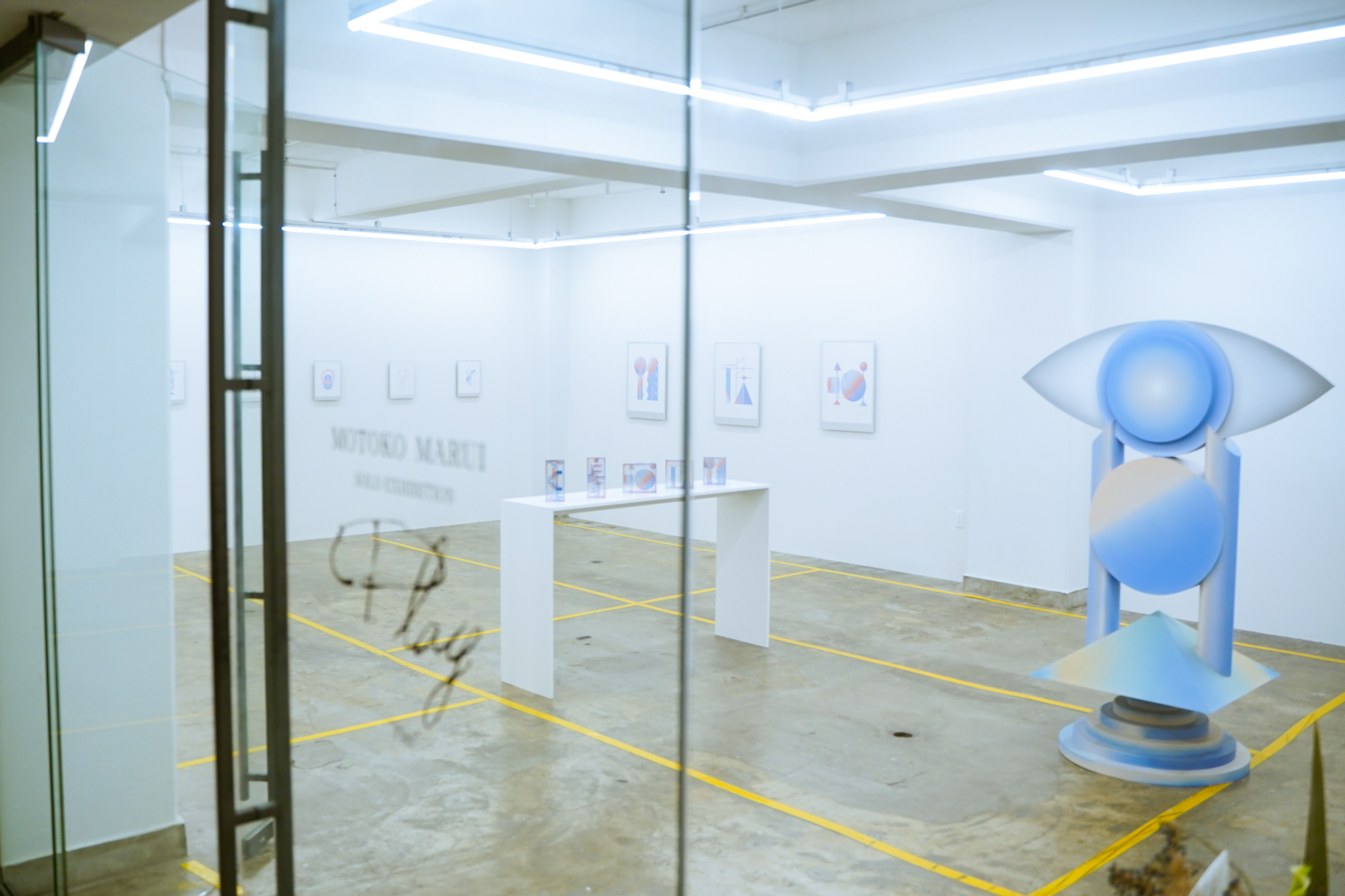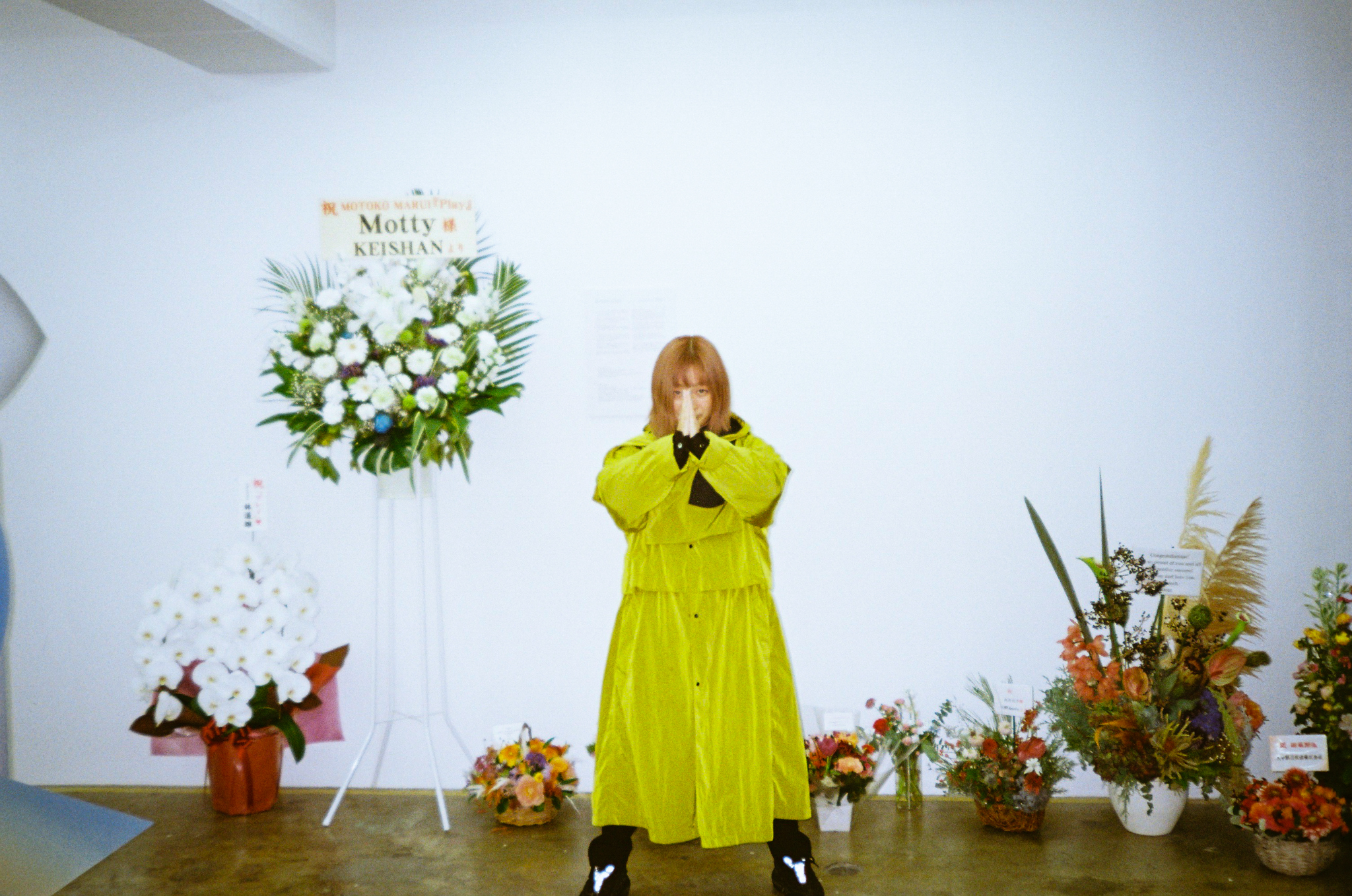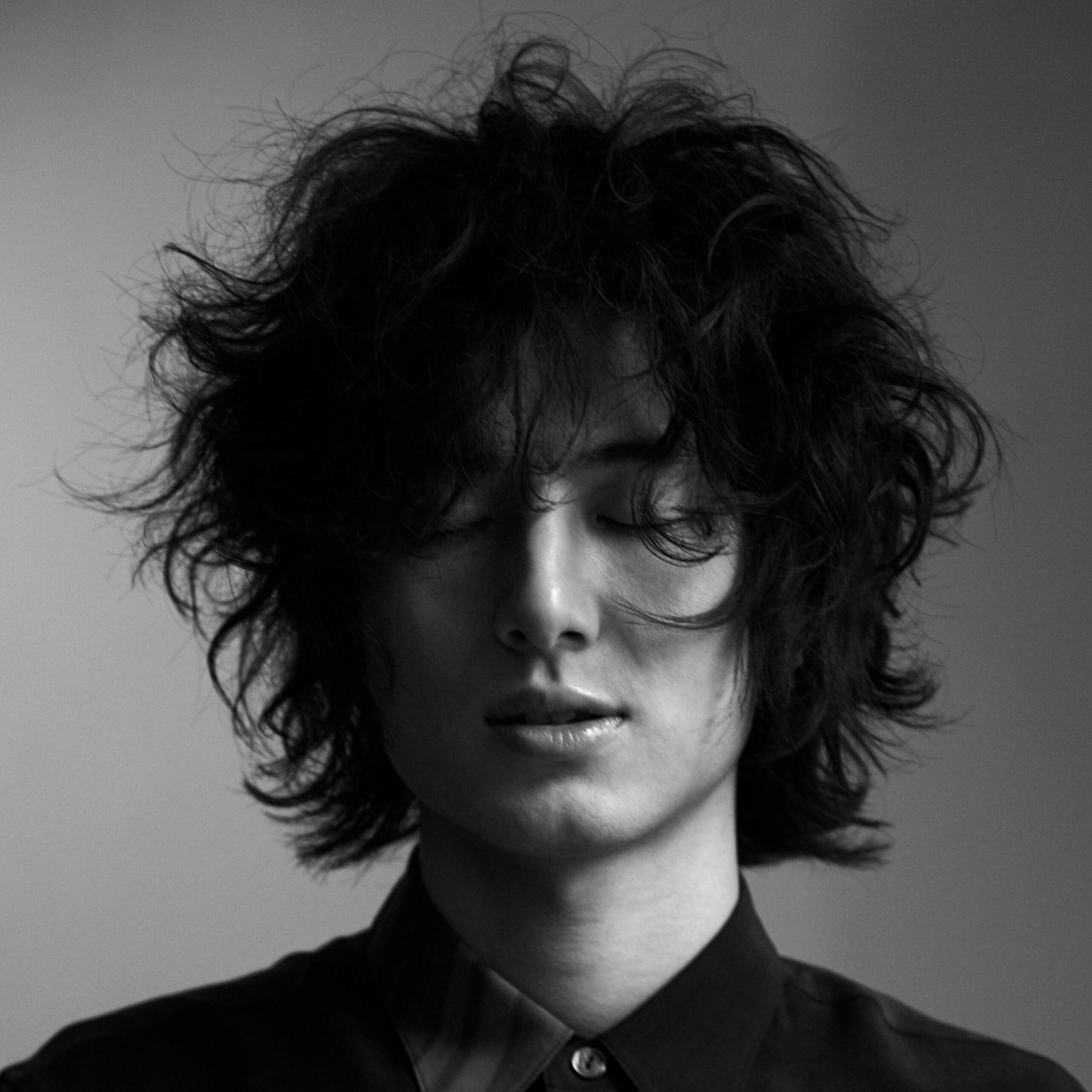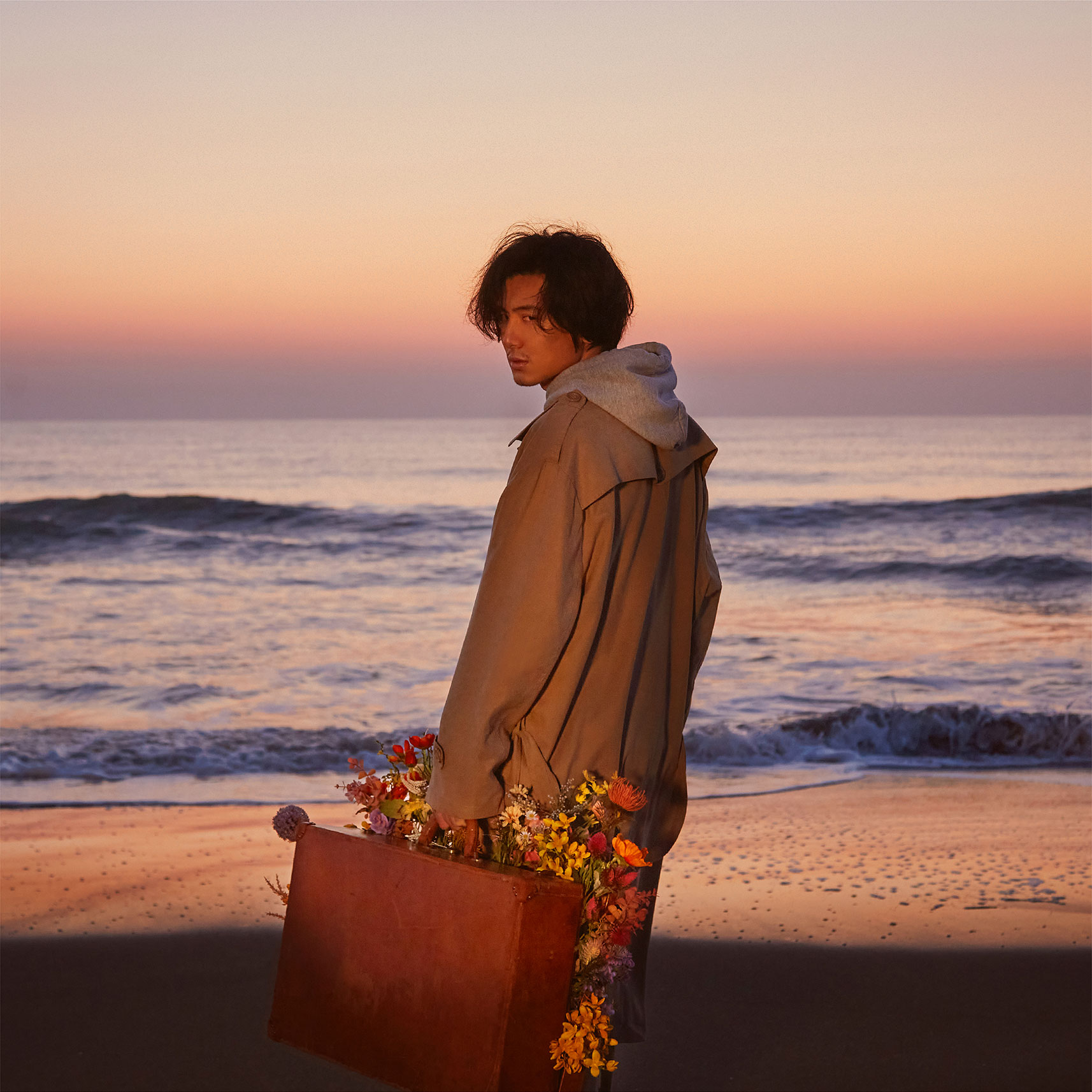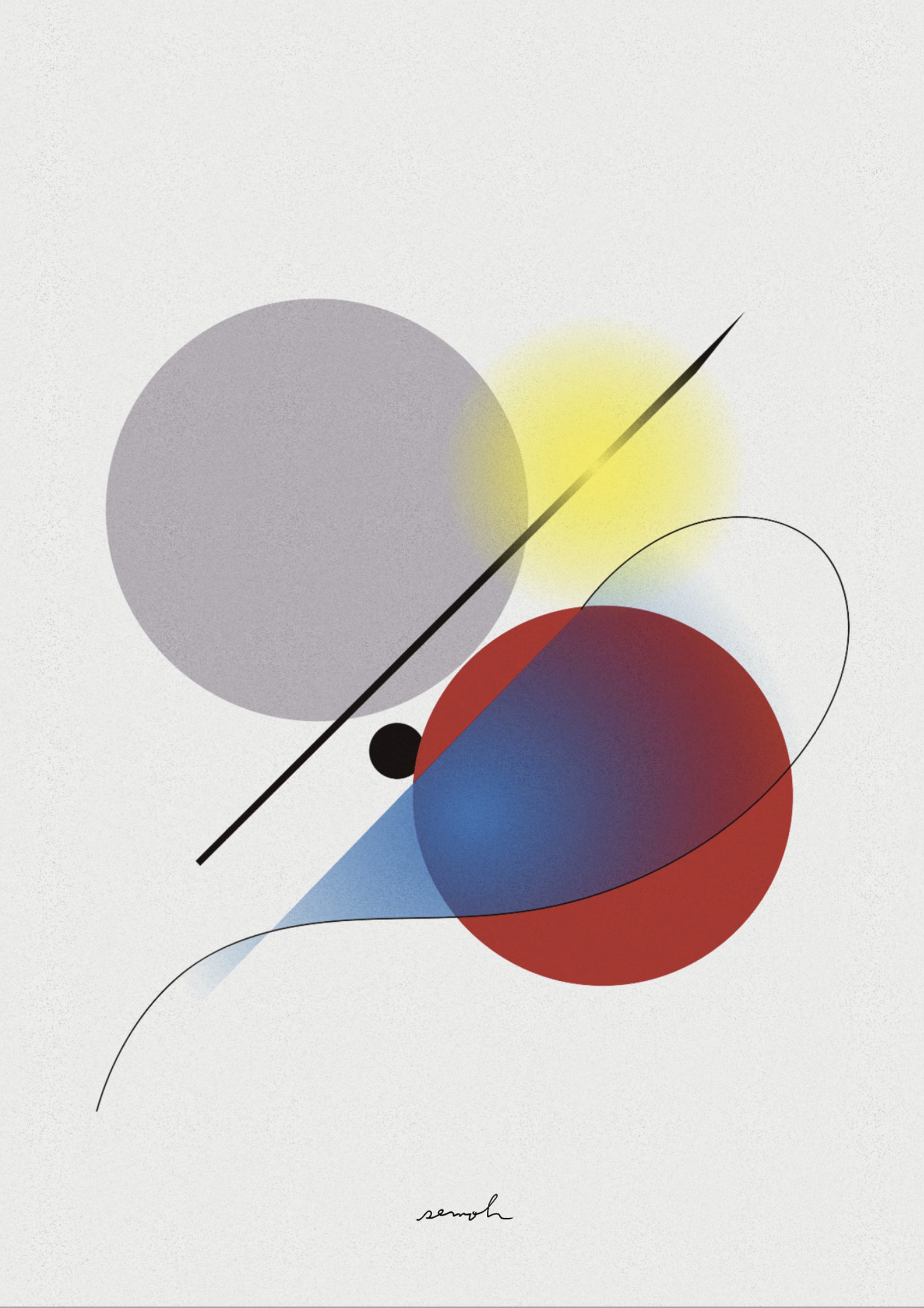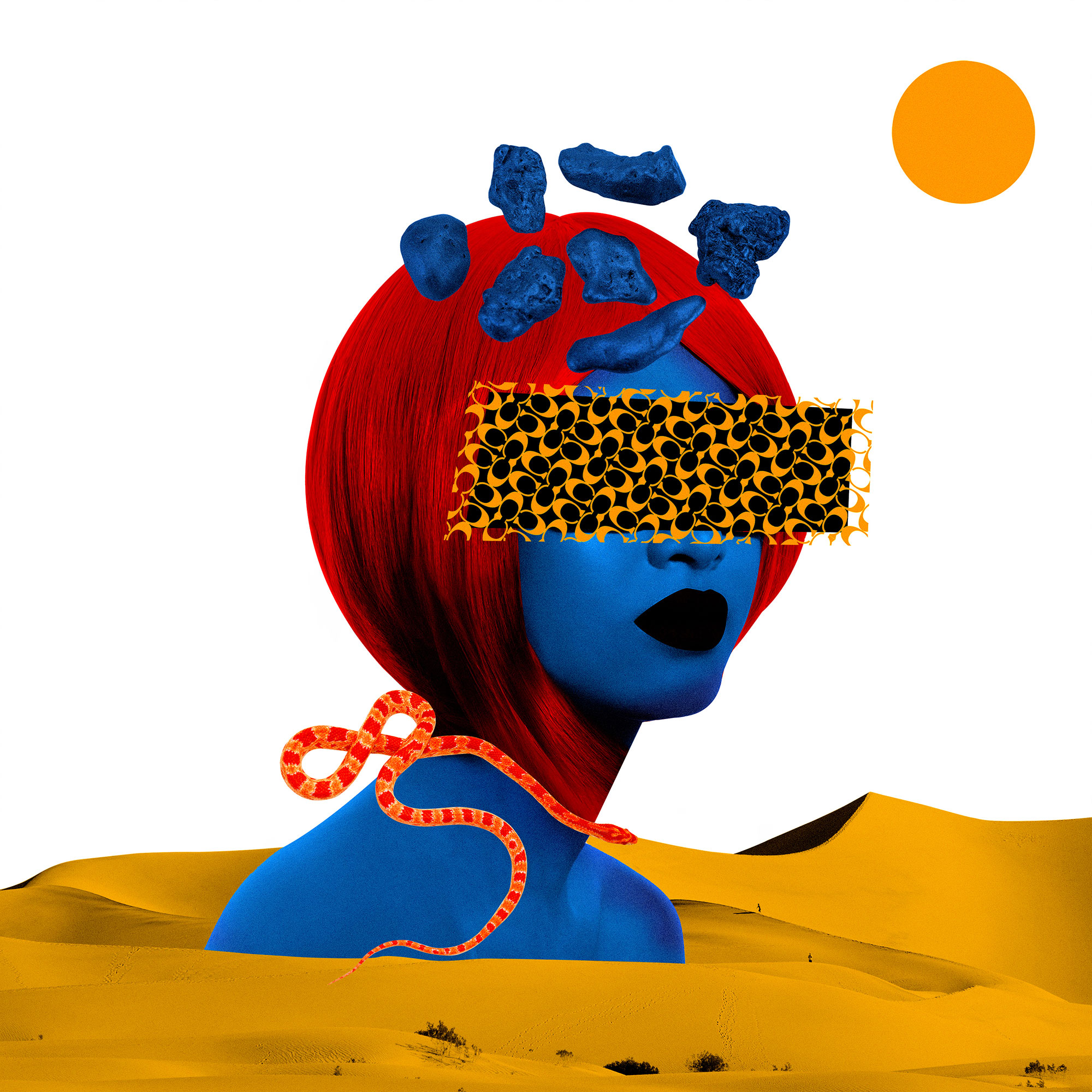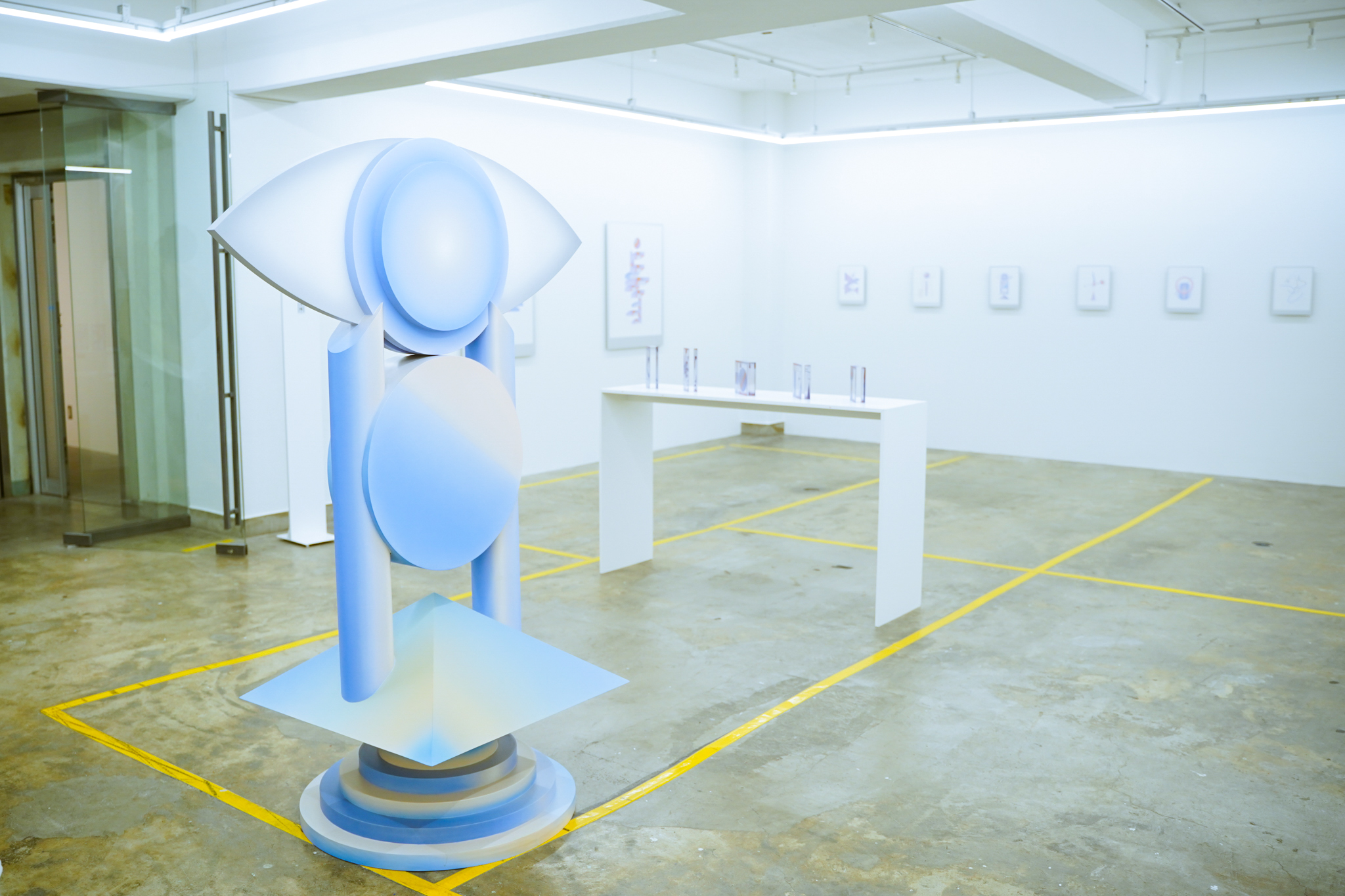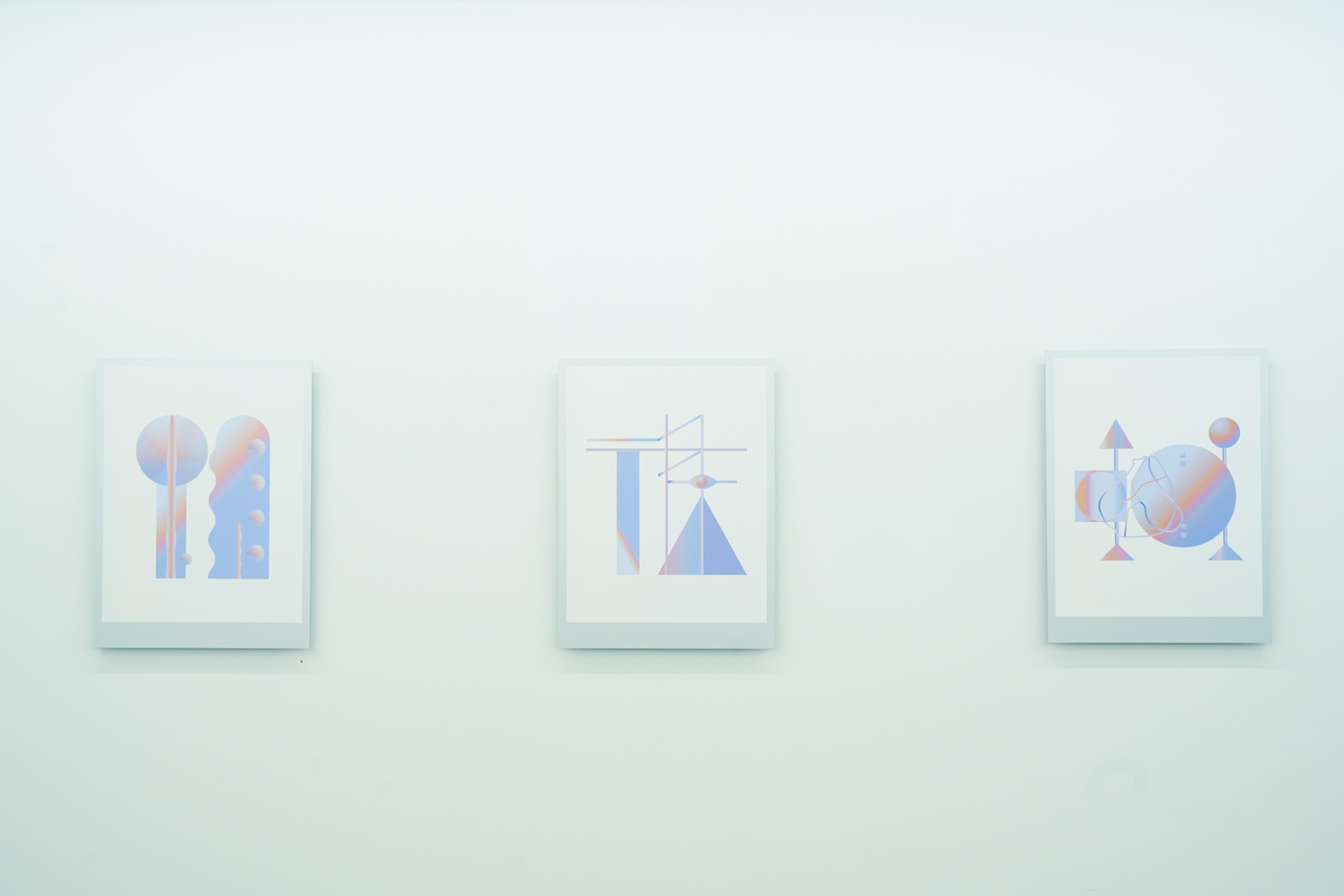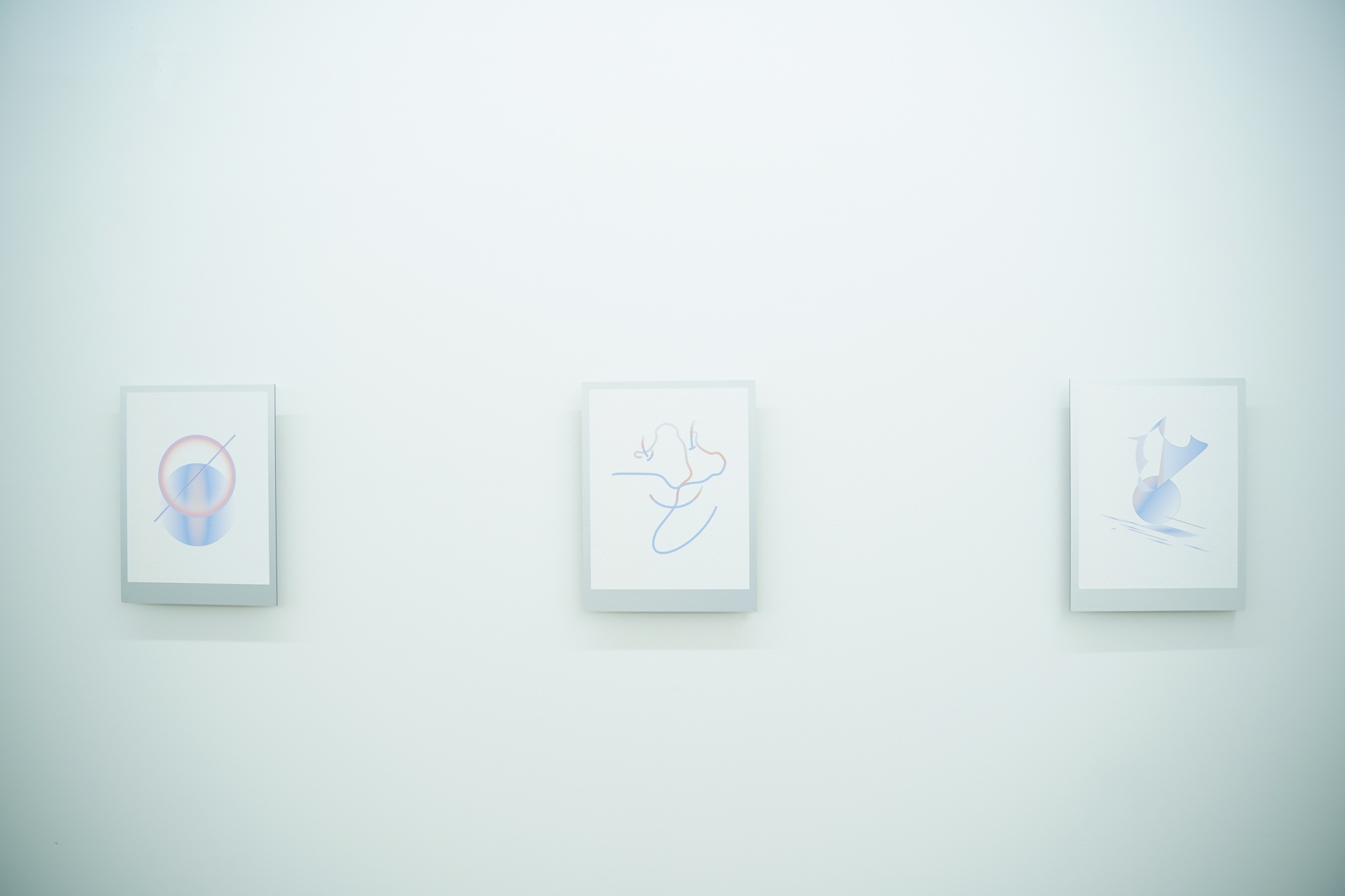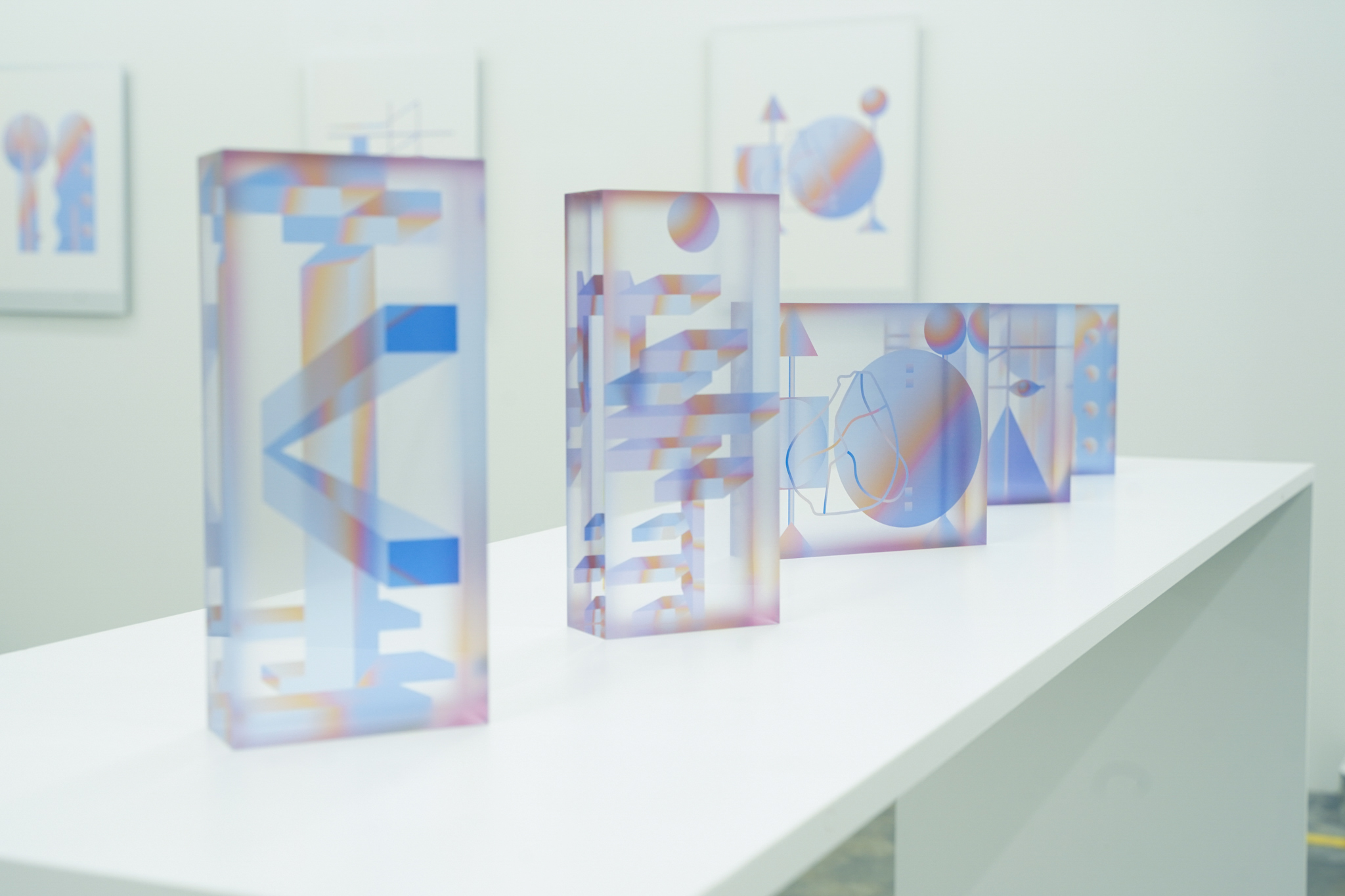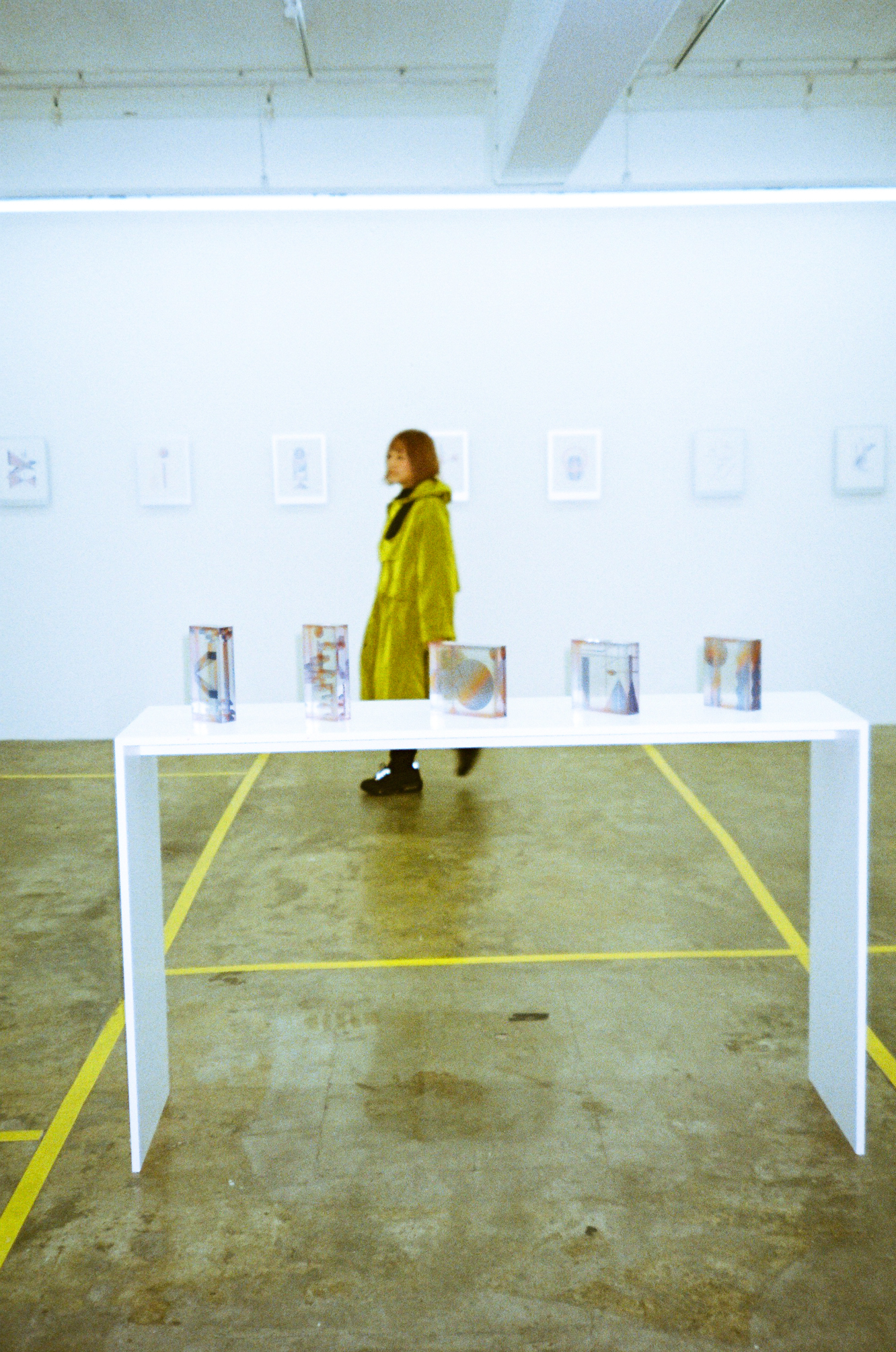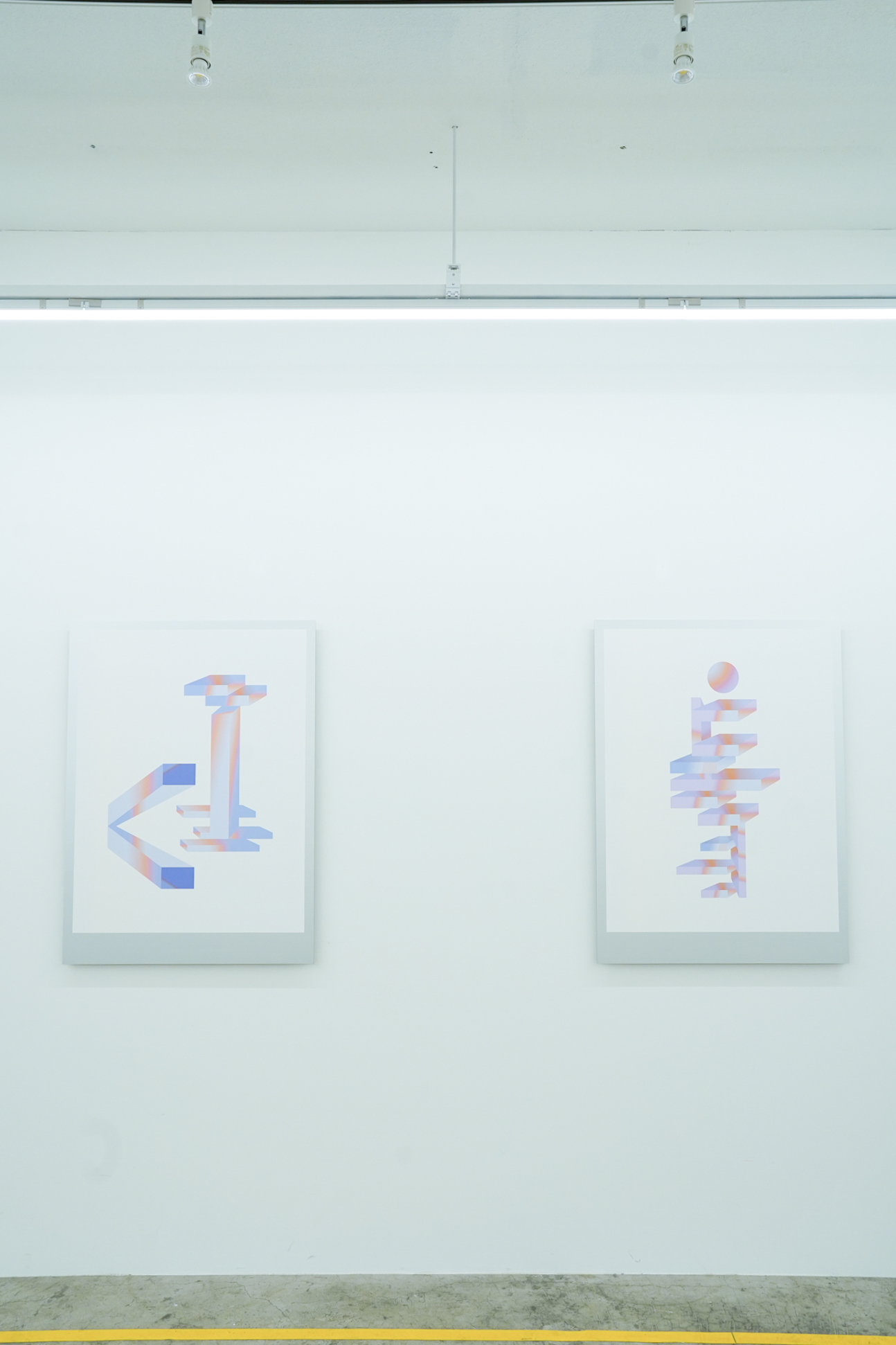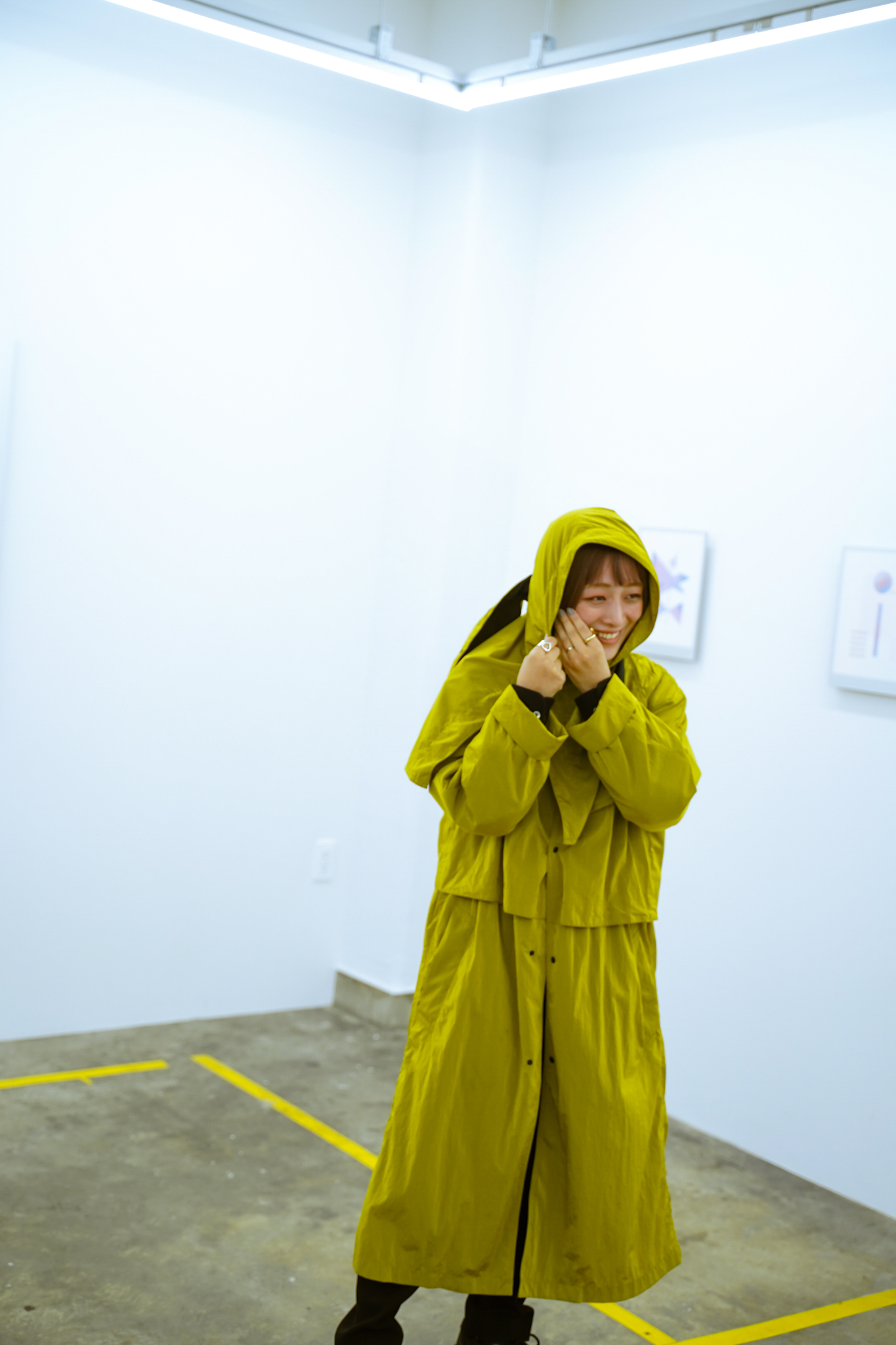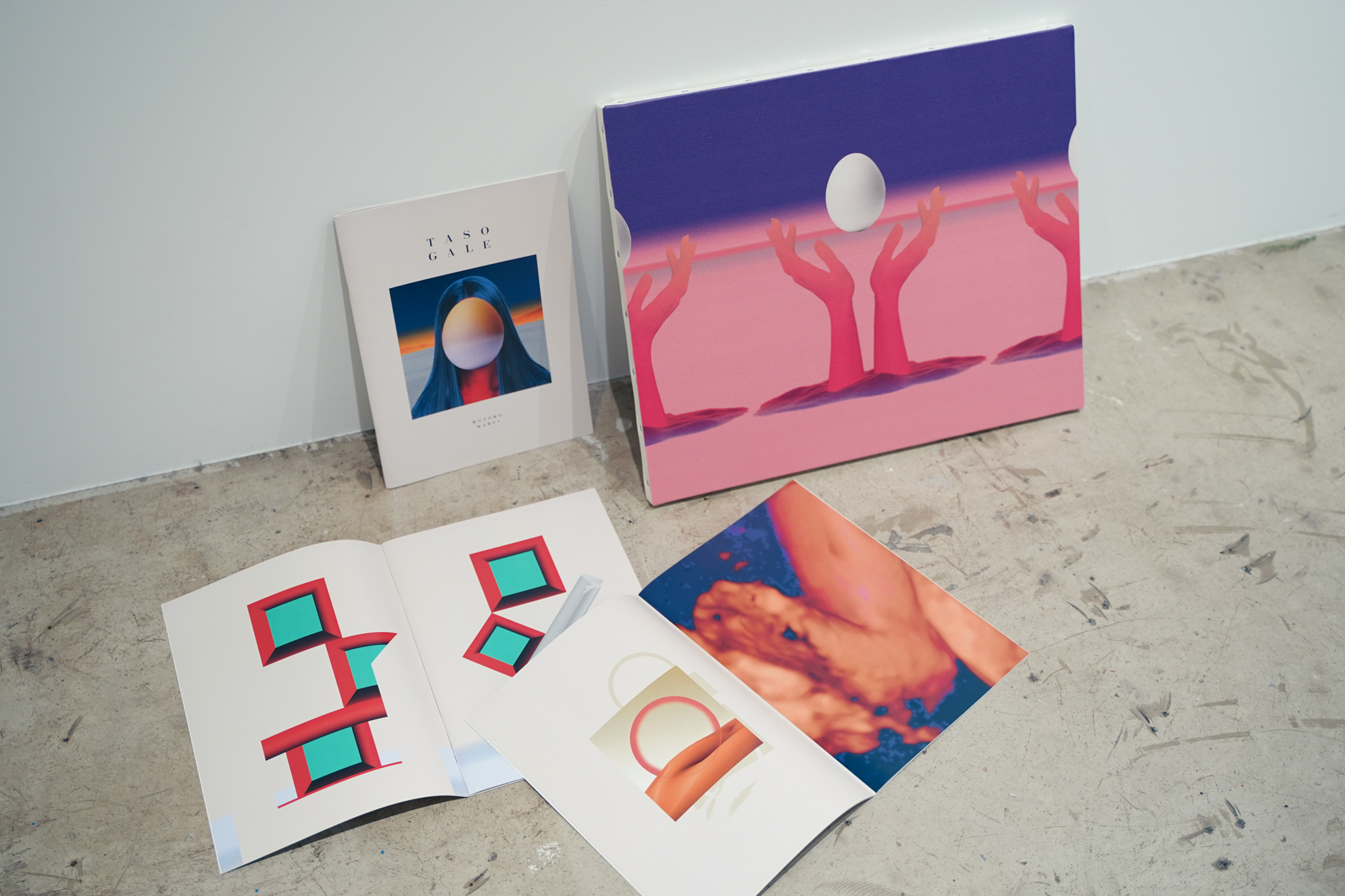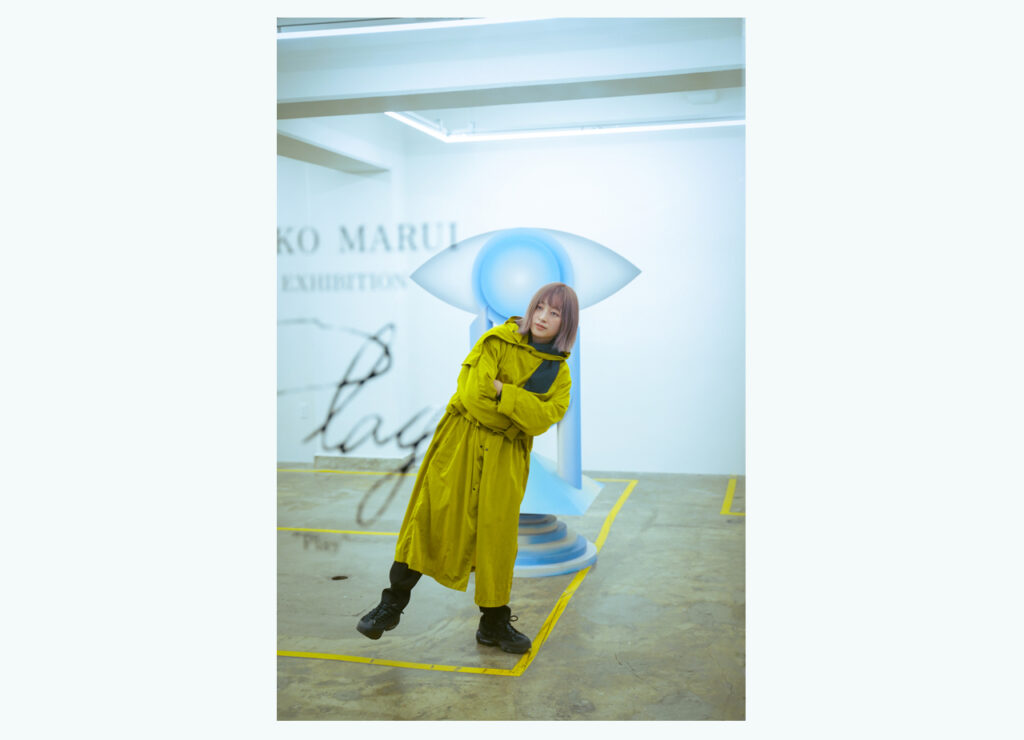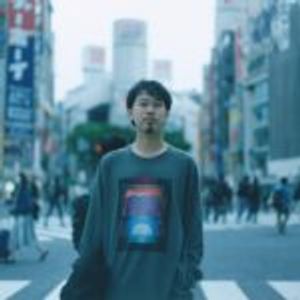Motoko Marui is an art director/graphic designer who has worked on CD jackets and key visuals for many artists, including Kaze Fujii, and has attracted attention for her collaboration works with famous brands such as Coach. Recently, she held her first solo exhibition “Play” at the gallery Tskigime.
In this solo exhibition, Motoko Marui, a mother of two, focused on the playground equipment in the park to create her works. The geometric forms represented in graphics and objects, colored with vivid gradations, all do not fit into any existing form of playground equipment. Therefore, in order to fully enjoy the playground equipment she creates, it is necessary to free your imagination and childlike sense of fun.
This time, we find out Motoko Marui’s words not only as an art director and graphic designer, but also as an artist. What is the message she wants to convey to the future?
Free and uninhibited playground equipment for all to enjoy, developed out of a sense of mission found in the middle of child raising
ーーThis exhibition, “Play,” is your first solo show at a gallery, but what do you usually do as a work?
Motoko Marui (Hereinafter Marui): Normally, as an art director/graphic designer, I mainly work on commercial projects such as advertisements, brand campaigns, CD jackets, and apparel collaborations.
ーーPersonally, I was impressed by and remember really well the work you’ve done for Coach’s collaboration projects with artists from around the world.
Marui: I participated in this project about three years ago. I was very happy to work with Coach. It all started when I was given the opportunity to make a collage for a project with Coach that appeared in the magazine “Numero TOKYO”. That led to a direct email from the Coach team in New York, and I was invited to participate in the collaboration project. It was a great honor.
ーーDo you have any other work with overseas clients?
Marui: I have been involved in various projects for magazines. Kaze Fujii, whom I have recently been working with for CD jackets, key visuals for live performances, and merchandise design, also creates works aiming to reach out to people all over the world, so in a sense, I am disseminating my works globally through works with him.
Some of the artworks Marui has done so far.
From left to right: Fujii Kaze’s “HELP EVER HURT COVER” 1st album jacket artwork and ”Tabiji” EP jacket artwork
From left to right: the key visuals of the collaboration items produced for the pop-up of the apparel brand “semoh” and the graphic work provided for “Coach”
ーーYou have a lot of commercial graphics on your Instagram and website. Have you ever created any works as an artist before?
Marui: I had an exhibition at Carbon, a dining bar on Dogenzaka street in Shibuya in the past, but since then I haven’t made much work.
ーーSo this is the first time in a while that you’ve created works, right? How did you feel when you actually started working on your solo exhibition?
Marui: I have been working mainly on commercial projects, but working on this exhibition changed my way of thinking a bit. At the very beginning of my career as a graphic designer, I used to go to live houses by myself and make flyers and CD jackets for indie bands. So for me, the fact that I have works with clients is just a blessing, and I put my heart and soul into each and every project.
For this solo exhibition, I concentrated on creating the works while limiting the number of commercial works I receive from clients. When I started to make the art works, it was like resetting myself, which I really enjoyed. I then started to feel like I wanted to make more of my own work. From now on, I would like to balance work and art making. I would be more than happy if the works I make are of use to someone else and also have a positive impact on my commercial works with clients.
ーーCan you tell us about the works you created for this exhibition?
Marui: The theme of this solo exhibition is “playground equipment.” Since I became a mother of two children a few years ago, I have had more opportunities to go to the park. One of the things that caught my interest was the playground equipment. There are a lot of parks in the city, with a lot of playground equipment, but some of the equipment has unusual colors and unique shapes. I got a sense of post-modernism from these playgrounds, so I looked up “playground equipment space post-modern” on the Internet, but there were almost no hits. That means, I realized that for many people, playground equipment is something that they have never really been aware of. As I was struggling to raise my own children, thinking that I was far from perfect as a parent, I realized that maybe this was the role I should play. That’s how I came up with the idea of a playground equipment that can be enjoyed by everyone, regardless of adults or children alike.
ーーWhat do you mean by the playground equipment that can be enjoyed by everyone?
Marui: Although parks are used by people of all ages and both sexes, but most playground equipment is made in shapes and motifs that small children would like, and in bright primary colors. However, since adults also go to the park, I thought it would be nice if there were some tricks that adults would find cool, some colors that would soothe them, and some shapes that would inspire them, so that they would feel a little refreshed when they go to the park. I thought it would be much more fun to have a park that would make us want to do a lot of hopping with our children.
ーーAs you said, it would be nice to have playground equipment in the park that can relax or inspire adults as well.
Marui: In the works shown in the exhibition, I didn’t make anything that looks like existing forms of playground equipment, except for pieces that look like a slide or a jungle gym. That’s what I had been wondering about during the creation process, but I came to the conclusion that it’s okay to leave them as they are.
ーーWhy did you come to that conclusion?
Marui: When we think about playground equipment, don’t we always assume a certain shape and a certain way of playing? But I think that’s because we assume that playground equipment is just for children. They can be different depending on the location, and it’s okay to have more free ideas for them. I felt that I needed to expand my own imagination about them, and that even that was part of play. After that realization, I began to think more and more that any shape can be used as playground equipment. Children would play in playground equipment of any form, wouldn’t they? I thought people with a childlike sense of fun would also be able to interpret them freely. In this project, I used a two-dimensional representation with which I could create any shape I wanted, so there may be many problems when it comes to actually making a three-dimensional playground equipment out of them. But that’s what made it even more interesting for me.
ーーYour solo exhibition consisted of one three-dimensional object, an acrylic works with which you can imagine three-dimensionality of the graphics, and graphic prints that look three-dimensional.
Marui: I didn’t want to create graphics that would satisfy people just as images. Since people go out and visit the gallery to see my works, I thought about how I could create something that would provoke their thoughts and make them want to own any of them. So I decided to materialize a graphic image of the playground equipment to create an three-dimensional object and also to make acrylic works that look different on how they are viewed, and carefully printed graphic images that express a sense of three-dimensionality.
ーーI was also curious about the titles of your works, such as “18:01,” “18:02” or “18:03.” What was the meaning behind them?
Marui: 17:00 is the time when children go home, and it is the time just before work ends for many of adults. At that time of evening, the color gradation of the sunset is beautiful, isn’t it? Whether it’s a client’s work or my own, I always place emphasis on the balance of colors. In this body of works, I particularly focused on the color of sunset.
ーーI also noticed the fact that the taste of this newest series is quite different from those of your previous works uploaded on your Instagram or on your website Did you make this difference intentionally?
Marui: Yes, I did it intentionally. When I was in junior high school and high school, I used to make circles and squares with the paint tool on my Windows PC. In the course of playing with that software, I came to make stickers for my friends’ bands, which I handed out at school and took to live shows. Looking back on it now, that’s the root of making graphics for me. So, this playground equipment with a geometric pattern motif is a return to this root, or rather, a return to my first objective.
Another turning point: Encounters with esteemed co-workers who broadened my worldview
ーーSo, your roots lie in playing with geometric pattern making. What was the turning point for you as a graphic designer in terms of establishing your current style?
Marui: The turning point came when I met the art directors Yoshirotten and Koji Wagatsuma of RALPH (now known as YAR) where I used to belong to, and the photographer Yoshimitsu Umekawa.
ーーHow did you come to meet them?
Marui: After graduating from high school in Oita Prefecture, I enrolled in a vocational school in Osaka and then moved to Tokyo, where I first worked as a temporary worker at a graphic design company and then as an employee at a design office. At that time, my goal was to create various visuals for, say, CD jackets. On the one hand, I learned a lot about typesetting and printing at the design office I worked back then, which is still of great use to me today. But on the other hand, since there were no works relating to photo shoots, I didn’t get a chance to do visual direction. Realizing that I would not be able to reach what I wanted to do if remaining in that environment, I turned my attention to photography. With photography, I could directly create visuals, so I decided to try my hand at photography instead of graphics, and I quit the design office to become a photographer’s assistant.
ーーSo you were going to quit graphics once?
Marui: Yes, I was about to quit graphics as my main career. Then I had a chance to work as an assistant for the photographer Yoshimitsu Umekawa. Since I had quitted my job at the company, I was working part-time at a pasta restaurant in Sangenjaya to make a living so that I could always be available for photo shoots. At that time, YOSHIROTTEN contacted me and said, “You can prioritize photography job but I would like you to help me out with my work when you have time.” That’s when I started to spend more and more time working at the creative studio RALPH.
ーーRALPH were working on a lot of artworks for musicians, right?
Marui: That’s right. So just when I was about to give up on graphic design, CD jacket job just came to me. Haha. After that, I studied photography under Yoshimitsu Umekawa, and graphic design in RALPH. Three years later, in 2014, I became independent and started working in my current style.
ーーDid you already meet YOSHIIROTTEN and Agatsuma before you started working as an assistant of Umekawa?
Marui: Yes, I met YOSHIIROTTEN when my friend and I went to an event of YATT, a DJ unit he belongs to, and I was introduced to him. Moreover, RALPH was three doors down from the design office I was working at the time, so I would meet him on the street and go to events where YATT was performing, and I looked up to him like an older brother. At that time, we were so close that we would hang out during breaks from work, and I think that’s why he contacted to me after I quit the design office.
ーーCan you tell us about what you learned from your bosses and older colleagues. Firstly, what did you learn from photographer Umekawa?
Marui: Umekawa-san is a person who has something that I don’t have. Of course, he is active in commercial photography, but he continues to explicitly state that he wants to do art. He has broadened my style, my view of what is truly cool and beautiful, and how I look at everything.
ーーThen, what did you learn from Yoshirotten and Wagatsuma?
Marui: This may sound a bit rude, but the edgy style that Yoshirotten-san likes is close to the ideal style that I love. His expressive technique is really amazing. That’s why I really enjoyed working for RALPH, and I learned a lot from the breadth of his expression. I also admire Yoshirotten-san and Wagatsuma-san’s attitude of taking care of the people around them. Through works with them, I was able to meet photographers, hair and makeup artists, stylists, and other creators that I would not have met if I had been working by myself. This has become a great asset for me now.
ーーListening to you talk so far, I felt that this solo exhibition “Play”, which was realized through your experience of raising children, was also a second turning point for you.
Marui: That’s right. There were a lot of things that I didn’t realize until I started to raise my children. For example, children’s fashion is for adults, isn’t it? But surprisingly, there are not many items that truly satisfy parents’ needs. So if there were more things that adults could think are fashionable or cool, and that would increase their sense of excitement, I think parenting would be more fun. Children love to see adults feeling happy. The same can be said for this exhibition. It speaks to people with a childlike playfulness. I want to see adults enjoying the playground equipment together with children. I would be happy if these works would change something, even if it is 100 years from now. I would like to continue to create works that will be a catalyst for the future.
Motoko Marui
Motoko Marui is an art director and graphic designer who works on visual expressions through her works for CD jackets, corporate advertisements, and brand collaborations.
http://nii.jpn.com/contents/category/works
Instagram:@_motty_
Photography Sumire Ozawa
Translation Shinichiro Sato

